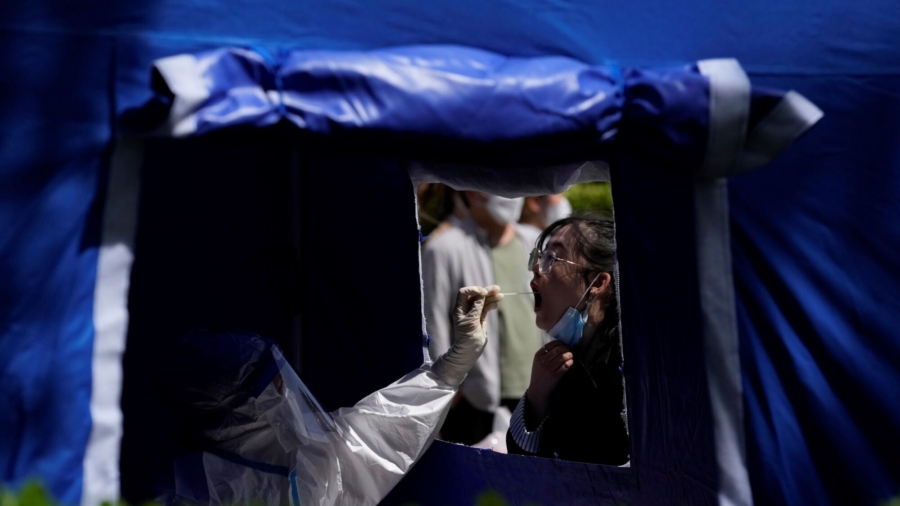BEIJING—Police and new fencing restricted who could leave a locked-down area in Beijing on Tuesday. People lined up for throat swabs across much of Beijing as mass testing was expanded to 11 of the city’s 16 districts.
Another 22 cases were found in the last 24 hours, Beijing health officials said at a late afternoon news conference, bringing the total to 92 since the outbreak was discovered five days ago. That is tiny in comparison to Shanghai, where the number of cases has topped 500,000 and at least 190 people have died. No deaths have been reported from the outbreak in Beijing.
The actual number of COVID-19 cases in Beijing and Shanghai may be much higher. China’s COVID-19 data is difficult to verify, as the Chinese regime routinely suppresses or alters information.
An initial announcement of testing in one Beijing district had sparked panic buying in the city of 21 million on Monday.
Beijing has locked down some apartment buildings and residential complexes and on Monday added a larger urban area measuring about 2 by 3 kilometers (1 by 2 miles). Workers put up blue metal fencing along part of the area Tuesday, and police restricted who could leave. Residents are being kept inside their compounds.
Fears of a total lockdown have been fed by disruptions in the supply of food, medicine, and daily necessities in Shanghai, a southeast coast business hub whose 25 million residents have only gradually been allowed to leave their homes after three weeks of confinement.
Shanghai residents, confined to their complexes or buildings, had trouble ordering food deliveries and also faced higher prices. The lockdown of China’s largest city has had ripple effects elsewhere as goods have backed up at Shanghai’s port, affecting factory production, global supply chains, and China’s own economic growth.
Other cities have also been locked down in China as the Omicron variant proves difficult to control, with Baotou in Inner Mongolia the latest to enforce one.
Beijing tested nearly 3.8 million people in an initial round of mass testing in Chaoyang district on Monday. All the results were negative except for one in a group of five that were tested together, a Chaoyang official said. Those five people were being tested to determine who among them is infected.
Chaoyang has had the most cases in the Beijing outbreak, but authorities decided to extend the testing to 10 more districts on Tuesday.

